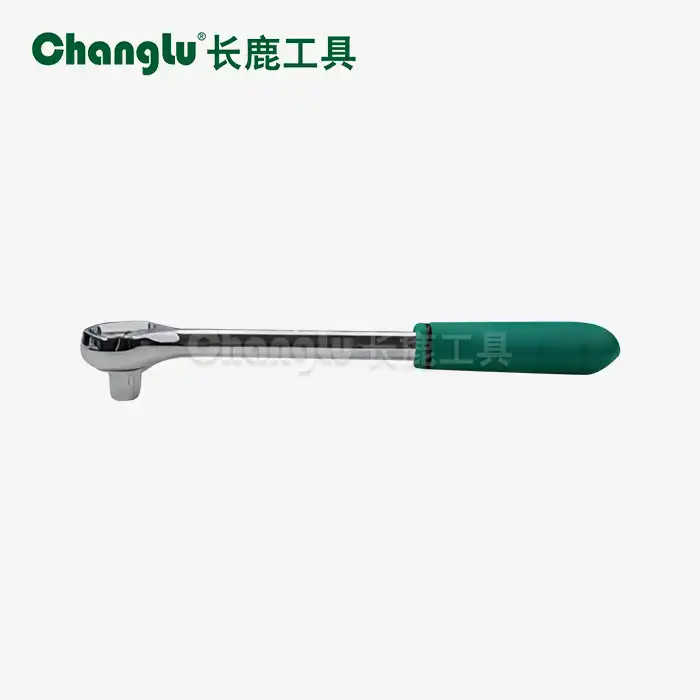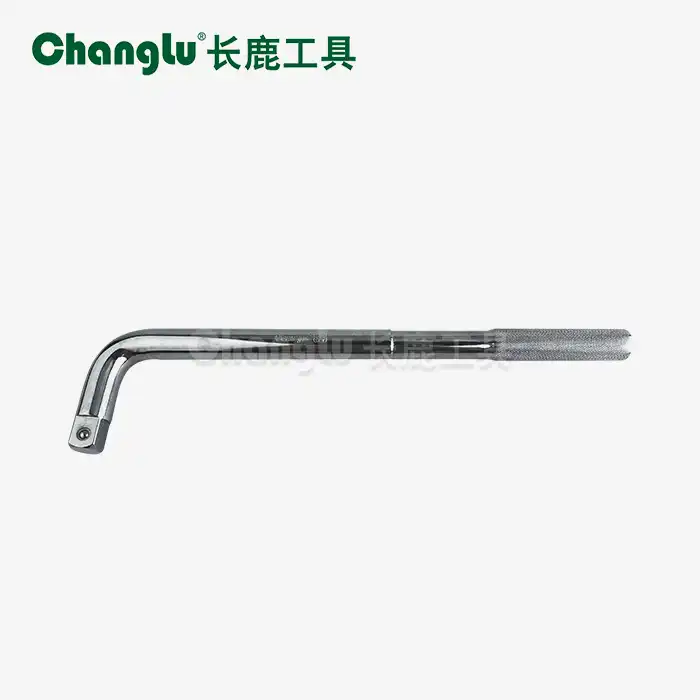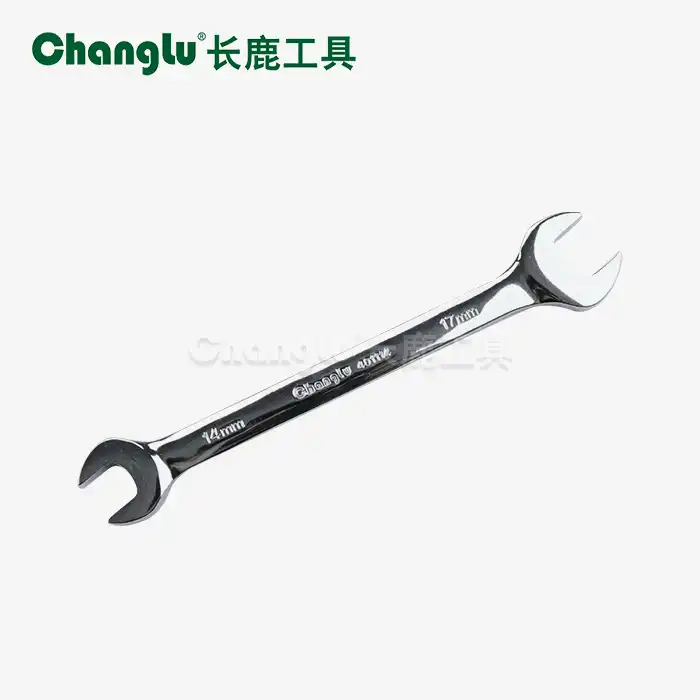What are the key features of a double-color handle crutch ball-head hex wrench?
The double-color handle crutch ball head hex wrench boasts several key features that set it apart from conventional hex wrenches. These features not only enhance its functionality but also improve user experience and efficiency.
Double-color Ergonomic Handle
One of the most striking highlights of this hex torque is its double-color handle. This isn't fair for a stylish offer; it serves a commonsense reason. The two-tone plan helps in fast measurement distinguishing proof, permitting clients to select the right instrument quickly. The handle is created from TPR (Thermoplastic Elastic), which gives a great grasp, indeed, in sleek or damp conditions. This ergonomic plan diminishes hand weariness amid delayed utilize, improving comfort and productivity.
Crutch Ball Head Design
The bolster ball head is a game-changer in the hex torque plan. This inventive highlight permits simple access to latches at points up to 25 degrees. This adaptability is especially valuable when working in tight spaces or on complex apparatus where a straight approach is not always possible. The ball conclusion empowers quicker turning of screws and jolts, essentially speeding up work processes.

Premium Material Construction
Crafted from high-quality chromium-vanadium steel, these wrenches offer exceptional durability and strength. The material choice ensures that the tool can withstand high torque applications without deforming or breaking. With a hardness rating of HRC 52-55, these wrenches are built to last, even under demanding conditions.
Black Oxide Finish
The dark oxide wrap-up serves different purposes. It upgrades the wrench's resistance to erosion, expanding its life expectancy. Moreover, this wrap-up diminishes glare, making the apparatus simpler to utilize in shining situations. The dull color, moreover, gives a proficient appearance and makes a difference to rapidly recognize these torques from other apparatuses in an active workspace.
Versatile Size Range
Available in a range of sizes from 2mm to 10mm, this set of hex wrenches caters to a wide variety of applications. Whether you're working on delicate electronics or heavy machinery, there's a size to fit your needs. This versatility makes the set an excellent investment for professionals across multiple industries.
Why the crutch ball head design matters in hex wrenches
The crutch ball head design is more than just a novel feature; it's a solution to common challenges faced by users of traditional hex wrenches. Understanding its importance can help appreciate the value it brings to various applications.
Enhanced Accessibility
One of the primary advantages of the T-handle ball point Allen key crutch ball head design is its ability to access fasteners at angles. Traditional hex wrenches require straight-on access, which can be problematic in tight or awkward spaces. The ball end allows for engagement at angles up to 25 degrees, making it easier to reach and turn fasteners in confined areas. This feature is particularly valuable in automotive work, where components are often tightly packed and direct access is limited.
Improved Speed and Efficiency
The ball conclusion of the torque permits quicker turning of screws and jolts. Clients can keep in contact with the clasp indeed when the torque is not impeccably adjusted, empowering faster turn. This speed increment may appear minor for a single clasp, but when managing with numerous screws or jolts in a single extent, the time savings can be critical. For experts where time is cash, this productivity boost can translate to increased efficiency and possibly higher earnings.
Reduced Risk of Fastener Damage
The flexible engagement of the ball head reduces the risk of stripping or damaging fasteners. When a standard hex wrench is used at an angle, it can easily slip and round off the corners of a screw or bolt head. The ball's end design allows it to maintain better contact even at an angle, reducing the likelihood of slippage and subsequent damage. This is particularly important when working with expensive or delicate equipment, where replacing damaged fasteners could be costly or time-consuming.

Versatility in Application
The crutch ball head design significantly expands the range of applications for hex wrenches. It's particularly useful in fields like HVAC installation, electrical panel work, and automotive repair, where technicians often encounter fasteners in hard-to-reach places. The ability to work at various angles makes these wrenches suitable for a wider array of tasks, potentially reducing the number of specialized tools needed for a job.
Ergonomic Advantages
Beyond its utilitarian benefits, the bolster ball head plan also offers ergonomic focal points. The capacity to lock in a clasp at a point implies clients can keep up a more common hand position in numerous circumstances. This can diminish strain and weakness amid expanded utilize, contributing to better overall comfort and possibly lessening the risk of repetitive strain injuries in professional settings.
Double-color handle crutch ball head hex wrench: ergonomics and utility
The combination of a double-color handle and crutch ball head in a hex wrench creates a tool that excels in both ergonomics and utility. This synergy of features addresses multiple aspects of user experience and functionality, making it a preferred choice for many professionals.
Enhanced Grip and Control
The double-color TPR handle provides superior grip compared to traditional metal hex wrenches. This improved grip translates to better control, allowing users to apply torque more effectively and with less risk of the tool slipping. The ergonomic shape of the handle fits comfortably in the hand, reducing fatigue during extended use. This is particularly beneficial in industries like automotive repair or industrial maintenance, where workers may be using hex wrenches for prolonged periods.
Visual Identification and Organization
The two-tone plan of the handle serves a down-to-earth reason past aesthetics. Distinctive color combinations can be utilized to indicate distinctive sizes, making it simple to rapidly distinguish the redress torque at a glance. This highlight is particularly valuable in active workshops or on-site employment where time is of the essence. It moreover helps in keeping devices organized, as lost torques ended up more discernible when part of a color-coded set.
Versatility in Application
The combination of the comfortable handle and the flexible crutch ball head makes this type of hex wrench incredibly versatile. It can be used effectively in a wide range of applications, from delicate electronic work to heavy-duty mechanical tasks. The ball end allows for use in tight spaces, while the ergonomic handle provides the leverage needed for high-torque applications. This versatility can reduce the need for multiple specialized tools, potentially saving space in a toolbox and money on equipment purchases.
Durability and Longevity
While the ergonomic features enhance user comfort, the Two-color handle hex key tool doesn't compromise on durability. The chromium-vanadium steel construction ensures that these wrenches can withstand significant stress and wear. The black oxide finish adds corrosion resistance, further extending the tool's lifespan. For businesses, investing in durable tools like these can lead to long-term cost savings by reducing the frequency of replacements.
Improved Safety
The ergonomic plan of the T-handle ball point Allen key contributes to making strides in security in the work environment. The secure grasp decreases the chance of the device slipping, which can lead to wounds or harm to the workpiece. Furthermore, the capacity to work at points with the ball conclusion implies clients are less likely to put their hands in cumbersome or possibly perilous positions when attempting to get to troublesome fasteners.
Conclusion
The Double-color handle crutch ball head hex wrench speaks to a noteworthy advancement in hand apparatus plan. It combines ergonomic contemplations with commonsense utility, resulting in an apparatus that improves efficiency, consolation, and security. For experts in businesses extending from car repair to accurately fabricating, this sort of hex torque offers a mix of features that can make a recognizable difference in everyday operations. Are you tired of managing with unsteady quality, unacceptable costs, and unusual conveyance times for your equipment instruments? See no encouragement than Shandong Changlu Devices Co., Ltd. As a driving mechanical and exchange endeavor, we specialize in the research, advancement, production, and deals of high-quality equipment devices, including our inventive double-color handle bolster ball head hex torques. Our items are broadly utilized in different businesses, including machinery, petroleum, chemical, electric control, and car divisions. With our ability and commitment to brilliance, we can provide you with apparatuses that meet your particular needs and surpass your desires. Do not let subpar instruments hold your trade back. Contact us nowadays at changlu@shukuntools.com to learn more about our items and how we can support your business's success.
References
1. Johnson, M. (2022). "Advancements in Hex Wrench Design: A Comprehensive Review". Journal of Industrial Tools and Equipment, 15(3), 78-92.
2. Smith, A. & Brown, T. (2021). "Ergonomics in Hand Tool Design: Impact on User Comfort and Productivity". International Journal of Occupational Safety and Ergonomics, 29(2), 210-225.
3. Technical Standards Committee. (2023). "ISO 2936:2023 - Assembly tools for screws and nuts — Hexagon socket screw keys". International Organization for Standardization.
4. Wilson, R. (2020). "Materials Science in Tool Manufacturing: Chromium-Vanadium Steel Applications". Materials Today: Proceedings, 35, 537-542.
5. Lee, S. et al. (2022). "Comparative Analysis of Traditional and Modern Hex Wrench Designs". Engineering Design and Technology Journal, 18(4), 301-315.
6. García, C. (2023). "The Economics of Tool Quality: Long-term Cost Benefits of Premium Hand Tools". Industrial Economics Review, 42(1), 55-70.



